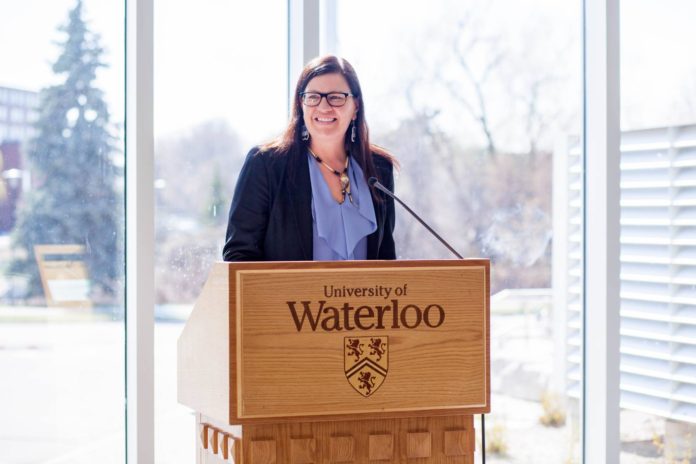The federal government has announced an $800 million settlement in recognition of the devastating impact the Sixties scoop had on Indigenous communities.
Lori Campbell, the director of the Waterloo Aboriginal Education Centre, knows first hand of the Sixties scoop, which was so named because it “scooped” Indigenous children from their communities and placed them with non-Indigenous families across the country.
At 14 months old, she was taken from the care of her mother, who was an Indigenous woman, and placed into foster care.
She was adopted at the age of two into a non-Indigenous family and for years, struggled with her identity and finding positive Indigenous role models.
“I had a huge sense of feeling like I didn’t fit in because I didn’t know who I was. I knew I was different,” said Campbell.
When she turned 19, she set out on a 25-year journey to find out more about where she came from and where her family may be.
Throughout the years she sent dozens of letters to the Canadian government and found her birth mother and six of her siblings.
Campbell found all of her brothers and her sister just last year. It is a search that has been part of her entire adult life.
On this journey, she realized that this was the government’s strategy to assimilate and erase Indigenous identity.
“‘What [the federal government] will do is we will take Indigenous children and we will erase their ‘Indianness’ to benevolently help them to be good successful people…The idea behind that was, to be successful, you had to be white – and that’s not okay,” said Campbell.
As the government sets up to give financial compensation to those having experienced the Sixties scoop, Campbell explains this is a small offering for the government to give.
Lasting issues from the Sixties scoop can still be felt today.
For example, there remains a disproportionate amount of Indigenous children in the foster care system.
“Even now, we have more Indigenous children in care than we ever did in the height of the residential school system,” expressed Campbell.
“We haven’t solved the problem and learned how to stop taking Indigenous kids from their families.”
Campbell explains that a lot has to be done, not only to heal within Indigenous communities but to move forward in this country, “and it starts in our education system,” she said.
The K-12 curriculum, according to Campbell, should talk about the collective history of Canada, including colonization, residential schools, and the Sixties scoop for Indigenous and non-Indigenous students alike to understand Canada’s dark past.
“If the country does not know its history, we are doomed to repeat it,” she said.
Campbell said Canada should start education on this topic early so children grow up learning about these important events.
“We’ve developed ways in our education to discuss age appropriate topics throughout their entire lifetime about challenging topics: life, death, violence, wars,” she said. “This is another piece that I think should be put in there.”
Campbell’s work at the university is to bridge that gap in knowledge, primarily by teaching non-Indigenous people about this history, thus hoping to give people a better understanding of what historically took place in Canada.
She hopes the future sees better access to educational opportunities for Indigenous students and ensures that they don’t have to “leave their Indigeneity at the door” in order to be successful.
Seeing Indigenous people in leadership roles, in high academia, and represented throughout the country helps exemplify not only the strength of Indigenous people, but also their resilience.
“The resistance is that we still exist,” said Campbell. “My existence is the resistance. We weren’t intended to exist at this point in time. Hopefully we think differently now.”
This article was edited to reflect that Campbell sent dozens of letters instead of thousands, as well as the fact that she has a sister.
































